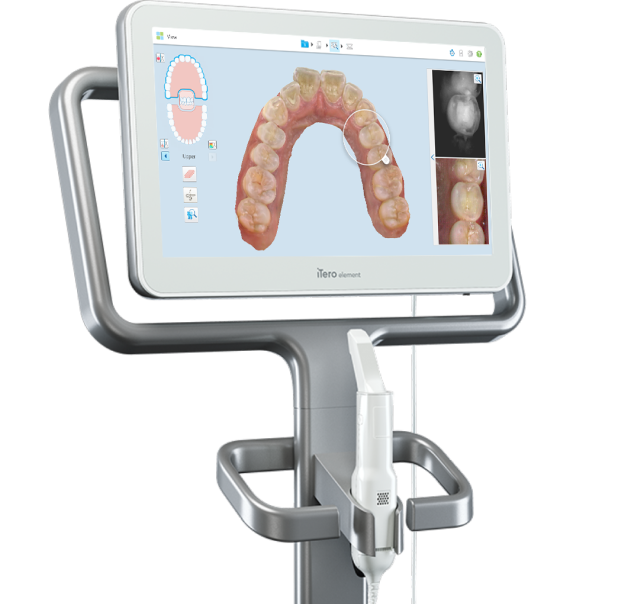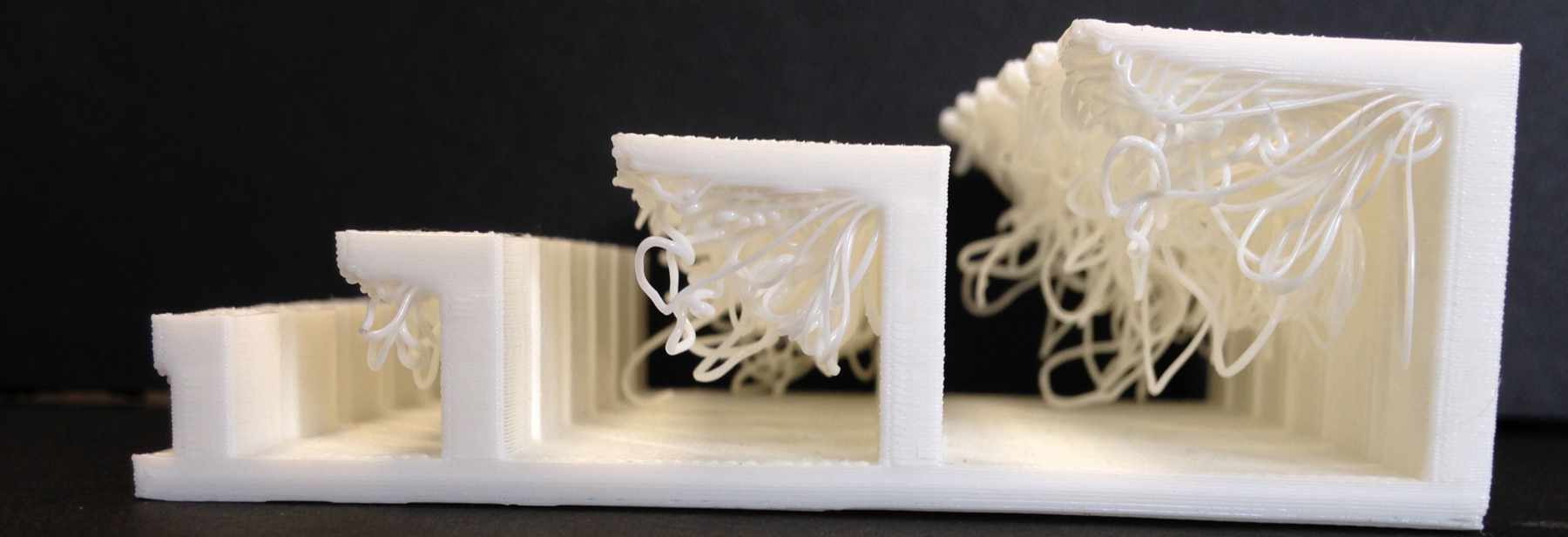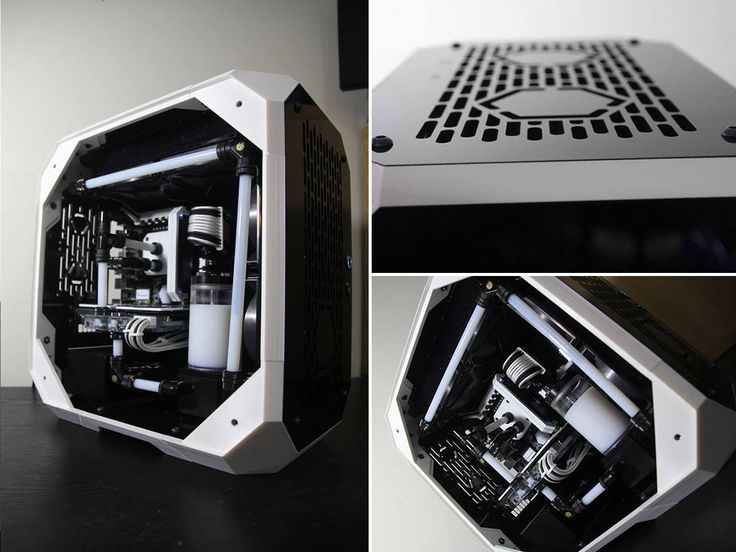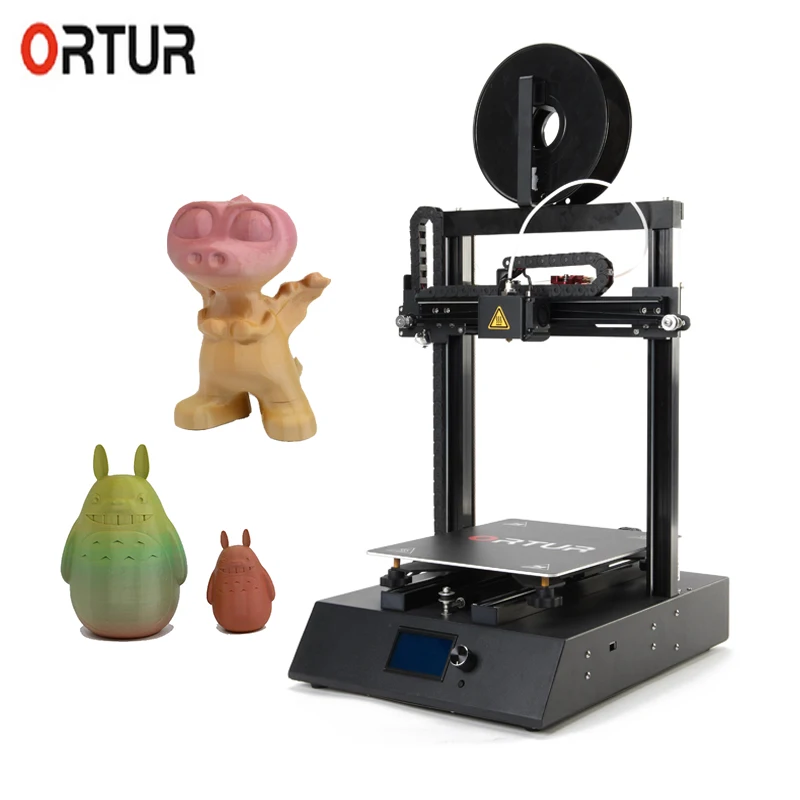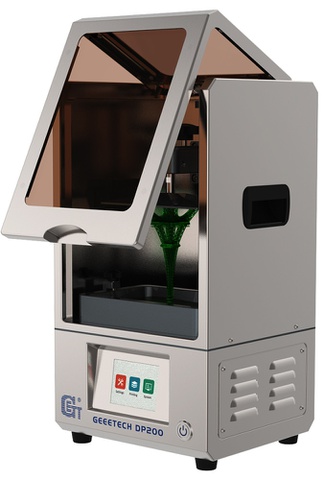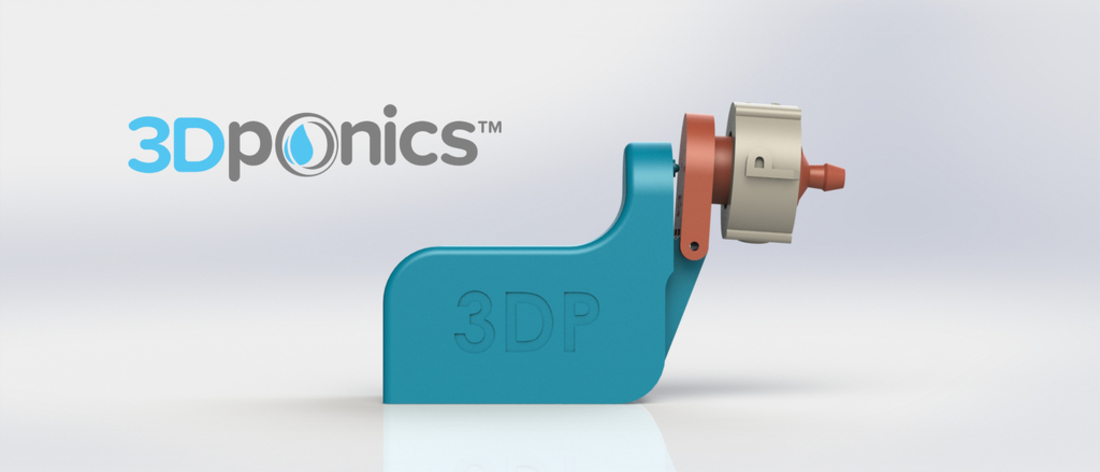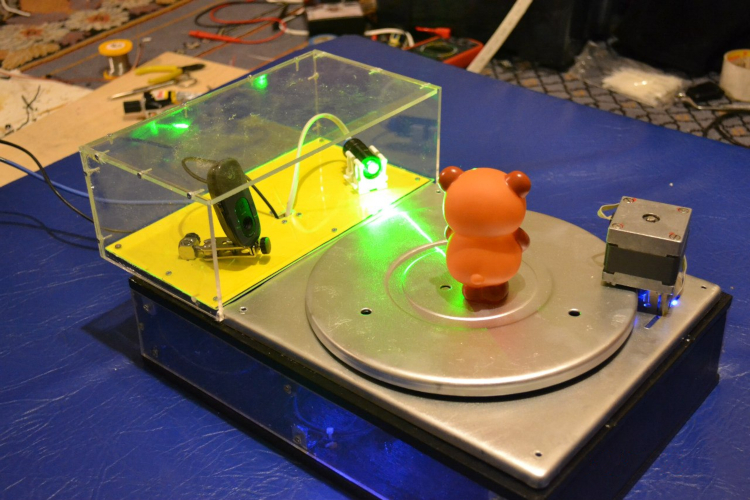Intraoral 3d dental scanners
The Top Intraoral Dental 3D Scanners on the Market
Published on July 1, 2021 by Madeleine P.
It is no secret that 3D technologies, and especially 3D scanners are becoming increasingly important in the dental sector. Recently, we covered the top dental lab 3D scanners, larger scanners that are used, as the name suggests, by dental labs to make the appliances from a premade impression. Though these are still probably the most popular scanners for 3D printing in the dental industry due to their greater accuracy, there is another type of dental scanner that we would be remiss to not cover: intraoral scanners. Intraoral dental 3D scanners are small handheld scanners that go directly into the patient’s mouth to examine the inside as well as to scan the teeth directly. They are significantly faster than impressions as the scans can be processed immediately, meaning they can be used to skip the impression stage. To help understand the options available to users, we have compiled a list of the available intraoral 3D scanners on the market in alphabetical order.
AORALSCAN from Shining 3D
The AORALSCAN is the intraoral dental 3D scanner offering from well-known 3D digitizing and AM technologies company Shining 3D. According to the manufacturing, the AORALSCAN is notable for its easy operation as well as its intelligent scan (a self-developed scanning software that integrates rich data processing functions for higher-quality digital impression) and realistic color. Additionally, it is powderless, meaning that there is a simplified process and improved patience experience. Data optimization is the main draw for this intraoral scanner, with AI helping to identify and delete extraneous data. Scanning is video-based with a speed of 15fps. Ideal operation will occur between 50°F – 104°F (10°C – 40°C) with Shining 3D warning that accuracy will be affected outside of those ranges. The scans can be exported as both STL and OBJ files.
CERECT PRIMESCAN from Dentsply Sirona
Dentsply Sirona is the industry-leading manufacturer of dental products.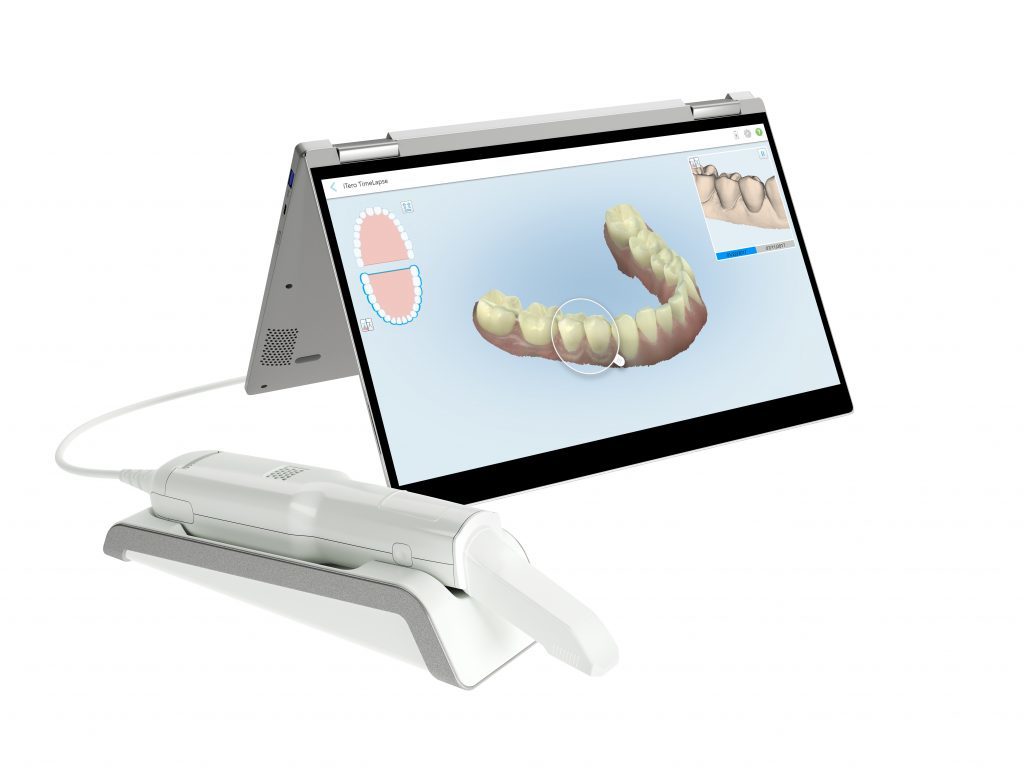 The company’s product range also includes the CEREC Primescan, which is one of the most innovative intraoral scanners on the market. The device is capable of processing more than 1 million 3D points per second – at depths of up to 20 mm. Dentists are said to be able to easily digitize hard-to-reach areas with the CEREC Primescan. The Primescan comes with a variety of sleeves, including autoclavable and disposable sleeves, which are said to ensure hygienic handling. An integrated touchscreen and touchpad guarantee easy operation. Thanks to the intelligent software, up to 50,000 images per second can be processed and, in combination with the CEREC software, an automated workflow is achieved, which makes it possible, for example, to produce full-zirconium restorations in just one session. According to the manufacturer, dentists will thus benefit from a complete chairside workflow.
The company’s product range also includes the CEREC Primescan, which is one of the most innovative intraoral scanners on the market. The device is capable of processing more than 1 million 3D points per second – at depths of up to 20 mm. Dentists are said to be able to easily digitize hard-to-reach areas with the CEREC Primescan. The Primescan comes with a variety of sleeves, including autoclavable and disposable sleeves, which are said to ensure hygienic handling. An integrated touchscreen and touchpad guarantee easy operation. Thanks to the intelligent software, up to 50,000 images per second can be processed and, in combination with the CEREC software, an automated workflow is achieved, which makes it possible, for example, to produce full-zirconium restorations in just one session. According to the manufacturer, dentists will thus benefit from a complete chairside workflow.
CS 3600 by Carestream Dental
American manufacturer Carestream Dental has developed a whole workflow around 3D scanning in the dental field, whether via desktop, intra-oral scanners or dedicated software.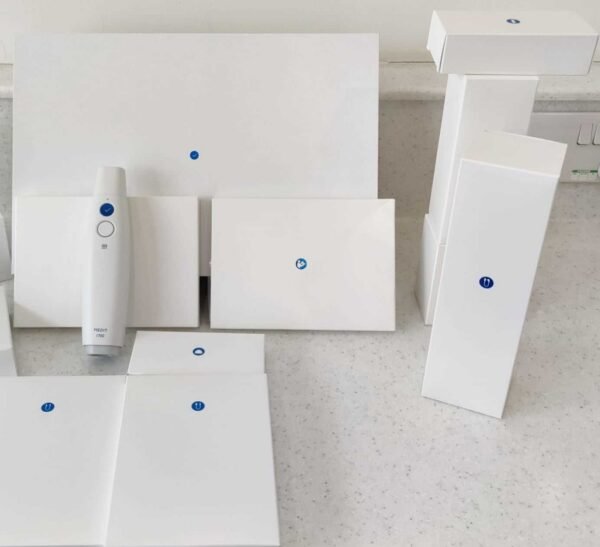 The model we are interested in is the CS 3600 intra-oral 3D scanner: on the market since 2016, it is a solution that can digitize all the data of a patient quickly and efficiently. Only weighing 325 grams (about 11.5oz), the scanner is very easy to handle. The CS 3600 uses an LED light and has a field of view of 13 x 13 mm. Two tips are offered with the scanner; depending on your needs, you can change them very easily. Finally, the intraoral scanner works with the CS Model software that will allow you to create digital models, save your 3D scans and edit them.
The model we are interested in is the CS 3600 intra-oral 3D scanner: on the market since 2016, it is a solution that can digitize all the data of a patient quickly and efficiently. Only weighing 325 grams (about 11.5oz), the scanner is very easy to handle. The CS 3600 uses an LED light and has a field of view of 13 x 13 mm. Two tips are offered with the scanner; depending on your needs, you can change them very easily. Finally, the intraoral scanner works with the CS Model software that will allow you to create digital models, save your 3D scans and edit them.
Condor Intraoral Scanner
Founded in 2010, Belgian company Condor Technologies NV specializes in the development, production and distribution of its intraoral scanner called Condor. According to the manufacturer, the Condor stands out from other intraoral scanners on the market: it has a unique software-based technology that enables hyper-realistic colors and a small size.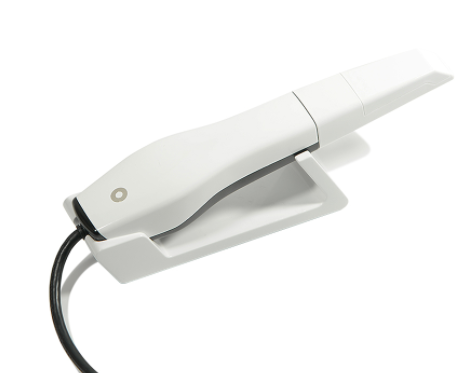 In fact, it is said to be the world’s smallest intraoral scanner, which is also available at an affordable price. Last but not least, the continuously improved software is available free of charge.
In fact, it is said to be the world’s smallest intraoral scanner, which is also available at an affordable price. Last but not least, the continuously improved software is available free of charge.
Emerald S from Planmeca
Founded in 1969, Planmeca is a Finnish dental equipment manufacturer that offers 3D scanners, CAD solutions and software. The model we are interested in today is the Planmeca Emerald S, an enhanced version of the Planmeca Emerald intraoral scanner. Compact and weighing only 229 g, the Planmeca Emerald S has been designed to be ergonomic and thus fit in users’ hands. Equipped with red, green and blue lasers, the 3D scanner captures prints in realistic colors. According to the manufacturer, it can scan a full arch in less than a minute. Finally, the Planmeca Emerald S comes with additional tips: the SlimLine tip, which is thinner and designed to facilitate access to posterior teeth, while the Cariosity transillumination tip is designed to detect caries.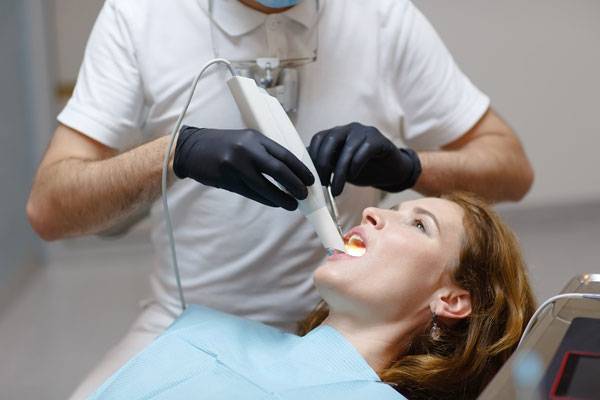
iTero Element 2 from Align
The next intraoral dental 3D scanner on our list is the iTero® element™ from the global dental company Align. The iTero® element™is two formats are available: a mobile version, the iTero® element™ 2, and a stationary unit, the iTero® element™ Flex 2. Within just 60 seconds, Align’s devices can produce a sharp, high-resolution 3D scan of a complete dental arch. Integrated side buttons and a touchpad for user interface control enhance handling and ease of use.
Medit i700 from Medit
The Medit i700 is one of the most recent intraoral dental 3D scanners to enter the market, in fact, it was just launched in April of this year, 2021.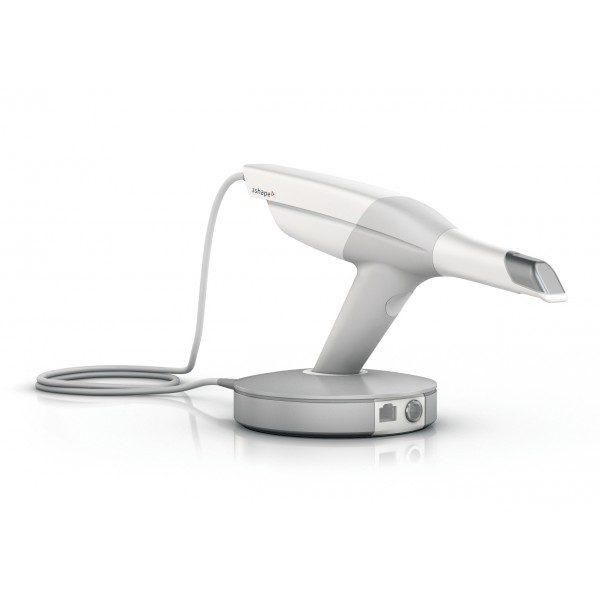 It stands out for making the scanning experience more comfortable for both the dentist and the patient. Compared to its predecessor, the Medit i500, the i700 is 25% smaller and 12% lighter (245g). In addition, the 3D scanning speed is up to twice as fast and features a deeper scanning depth as well as a quadrupled color expression quality. It also integrates full-arc accuracy of 11 microns, which is key to unlocking the full potential of a clinic. Its ease of use and ergonomics make it easy to incorporate the Medit i700 scanner into any dental workflow.
It stands out for making the scanning experience more comfortable for both the dentist and the patient. Compared to its predecessor, the Medit i500, the i700 is 25% smaller and 12% lighter (245g). In addition, the 3D scanning speed is up to twice as fast and features a deeper scanning depth as well as a quadrupled color expression quality. It also integrates full-arc accuracy of 11 microns, which is key to unlocking the full potential of a clinic. Its ease of use and ergonomics make it easy to incorporate the Medit i700 scanner into any dental workflow.
TRIOS 4 by 3Shape
3Shape is another well-known scanner manufacturer in the dental industry. Though they have lab options, their intraoral scanner line is often mentioned as one of the best in the sector. The TRIOS series is made up of 3 intraoral scanners: TRIOS 4; TRIOS 3; and TRIOS 3 Basic. TRIOS 4 is the most advanced offering from the company, using LED light and weighing only .8lbs (375g). Furthermore, it has a variety of interesting features, it is available in both wireless and wired forms, boasts improved Wi-Fi connection and has instant-heat smart tips and extended battery life. It also has Caries diagnostic aid, though note that this has not yet been cleared for clinical use by the FDA.
TRIOS 4 is the most advanced offering from the company, using LED light and weighing only .8lbs (375g). Furthermore, it has a variety of interesting features, it is available in both wireless and wired forms, boasts improved Wi-Fi connection and has instant-heat smart tips and extended battery life. It also has Caries diagnostic aid, though note that this has not yet been cleared for clinical use by the FDA.
Virtuo Vivo from Dental Wings
Dental Wings was founded in 2007 in Canada and now markets its dental products in 70 countries for practitioners, clinicians and laboratories. Among its range of solutions is the Virtuo Vivo intraoral scanner, which is reminiscent of a pen – it is also lightweight at 4.6oz (130g). It is able to scan the data of the patient’s mouth from all angles, both teeth and tissues. The scanner is equipped with a luminescent ring and a sound signal system to warn the practitioner that the data has been digitized. The data is then sent to the 3D software, which verifies its quality.
What do you think of our list of intraoral dental 3D scanners? Are we missing any? Let us know in a comment below or on our Facebook, Twitter and LinkedIn pages! Sign up for our free weekly Newsletter here, the latest 3D printing news straight to your inbox!
iTero
LaborsucheProduktdemo anfragen
English (EU)English (UK)Français (France)Deutsch (Germany)Italiano (Italy)Español (Spain)Turkish (Turkey)Polish (Poland)Russian (Russia)Nederlands (Dutch)FinnishNorwegian BokmålSwedishDanish (Denmark)Icelandic (Iceland)
Ein leistungsstarkes Tool, das durch realistische In-Face-Visualisierungen potenzielle Patienten schon vor Behandlungsbeginn von ihrem zukünftigen Lächeln überzeugen und zu Ihrer Praxisentwicklung beitragen kann. Verfügbar auf Intraoralscannern und Bildgebungssystem der iTero Element™ Plus Serie.
Mehr erfahren
Egal, wo Sie sich auf Ihrer digitalen Reise befinden, unsere Mission ist es, Sie bei der Verwirklichung Ihrer Vision für Ihre Praxis zu unterstützen.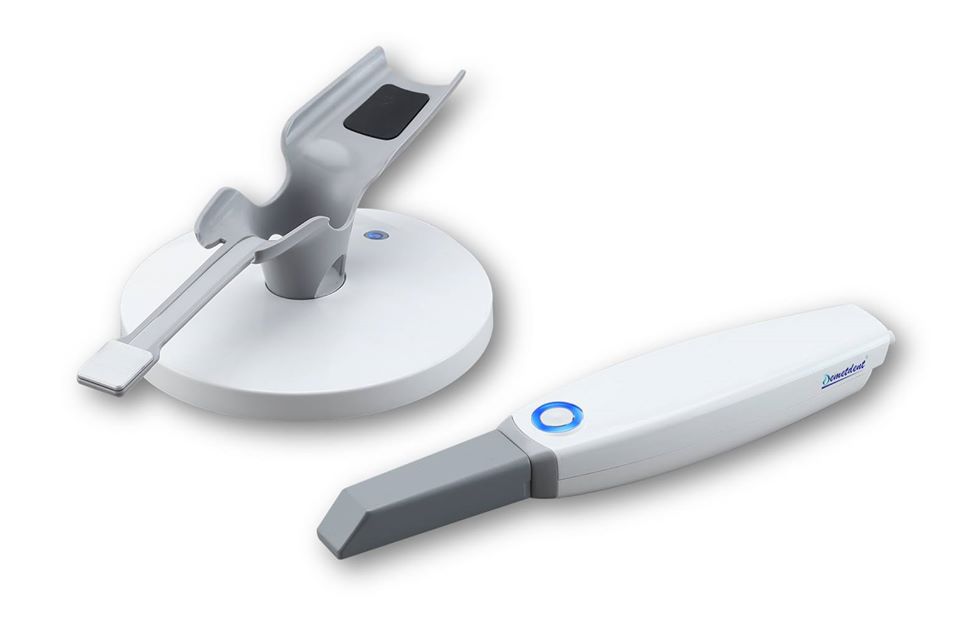 Aus diesem Grund entwickeln wir Lösungen, um Ihre Workflows zu optimieren und Ihre Weiterentwicklung zu fördern. Ihre Patienten werden eingebunden. Und wir helfen Ihnen, selbstbewusster zu arbeiten. Gemeinsam können wir uns für die Zukunft wappnen.
Aus diesem Grund entwickeln wir Lösungen, um Ihre Workflows zu optimieren und Ihre Weiterentwicklung zu fördern. Ihre Patienten werden eingebunden. Und wir helfen Ihnen, selbstbewusster zu arbeiten. Gemeinsam können wir uns für die Zukunft wappnen.
Eine kürzlich im The Journal of Clinical Dentistry publizierte Peer-Review-Studie4 bestätigt, dass die Einführung des iTero Intraoralscanners bei der Invisalign Behandlung das Behandlungsvolumen steigert und als Triebkraft für die Weiterentwicklung der Praxis dient.
Für die kieferorthopädische Praxis
2Innerhalb von 6 Monaten kann sich der iTero Intraoralscanner schon ausbezahlt haben
12,42 zusätzliche Invisalign Fälle nach 12 Monaten
€48.530 Steigerung der Einkünfte mit Invisalign Fällen nach 12 Monaten
Für die Zahnarztpraxis
3Innerhalb eines Jahres kann sich der iTero Intraoralscanner schon ausbezahlt haben
5,92 zusätzliche Invisalign Fälle nach 12 Monaten
€33. 000 Steigerung der Einkünfte mit Invisalign Fällen nach 12 Monaten
000 Steigerung der Einkünfte mit Invisalign Fällen nach 12 Monaten
Sie möchten weitere Informationen über das Invisalign System erhalten?
Klicken Sie hier
Restaurative Lösungen
Durch die Verbesserung der Vorhersagbarkeit der Behandlung von Kronen und Brücken bis hin zu zahnlosen Kiefern, kann der Einsatz des iTero Intraoralscanners Ihre Effizienz steigern, sodass Sie Ihre Stuhlzeit optimal nutzen können.
Kieferorthopädische Lösungen
Der Einsatz des iTero Intraoralscanners trägt dazu bei, die Arbeitsabläufe und die Behandlungsgenauigkeit Ihrer Praxis zu optimieren. Dabei können die aussagekräftigen 3D-Grafiken Ihnen helfen, besser mit den Patienten zu kommunizieren.
Laborlösungen
Unabhängig davon, ob Ihre Kunden digitale Workflows verwenden oder nicht, mit dem iTero Intraoralscanner kann Ihr Labor Abdrücke scannen und schneller mit den Herstellungsabläufen beginnen. Steigern Sie Ihre Produktivität und Ihren Behandlungsstandard.
iTero Element 5D Intraoralscanner
Unser erstes Bildgebungssystem mit NIRI-Technologie.
ProduktdetailsiTero Element 2 Intraoralscanner
Bewährte Innovation für eine effektivere Behandlung.
ProduktdetailsiTero Element Flex Intraoralscanner
Bewährte Innovation in einem tragbaren Design.
ProduktdetailsiTero Element Plus Serie
Unsere neuesten Innovationen.
ProduktdetailsiTero Element 5D Intraoralscanner
Unser erstes Bildgebungssystem mit NIRI-Technologie.
ProduktdetailsiTero Element 2 Intraoralscanner
Bewährte Innovation für eine effektivere Behandlung.
ProduktdetailsiTero Element Flex Intraoralscanner
Bewährte Innovation in einem tragbaren Design.
ProduktdetailsiTero Element Plus Serie
Unsere neuesten Innovationen.
ProduktdetailsiTero Element 5D Intraoralscanner
Unser erstes Bildgebungssystem mit NIRI-Technologie.
ProduktdetailsiTero Element 2 Intraoralscanner
Bewährte Innovation für eine effektivere Behandlung.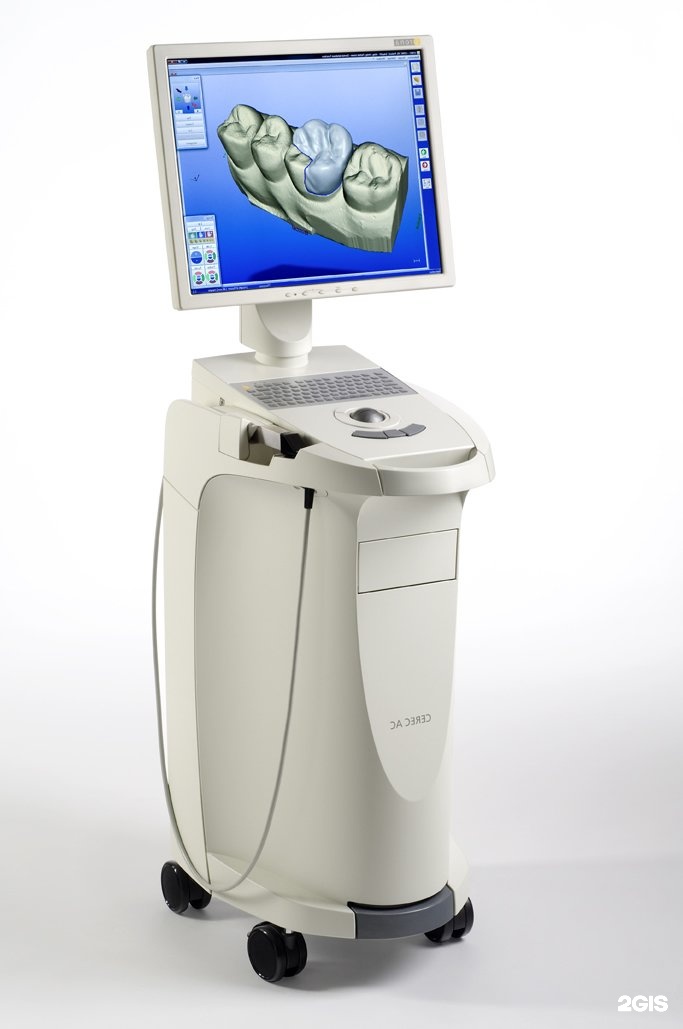
iTero Element Flex Intraoralscanner
Bewährte Innovation in einem tragbaren Design.
Produktdetails
Produktdemo anfragen
- * Das/die iTero Element Scannermodell(e) sind eventuell nicht auf allen Märkten erhältlich - bitte wenden Sie sich an Ihre lokale Align Technology Niederlassung. Die aktuellen Geschäftsbedingungen können auf myitero.com oder myaligntech.com eingesehen werden. Die Cart/Mobile-Konfiguration der iTero Element Plus Intraoralscanner ist derzeit in Ländern der Europäischen Union, Norwegen, der Schweiz und Großbritannien erhältlich.
- 1 Mit einem voll aufgeladenen Akku kann der Anwender 30 Minuten scannen, ohne das Netzteil anschließen zu müssen.
- 2 Retrospektive Datenauswertung und quantitative Analyse, durchgeführt von Dr. MacKay, Universität Memphis. 495 kieferorthopädische Praxen weltweit. Angenommen für die Veröffentlichung im Journal of Clinical Dentistry. Auswertung basierend auf einer Invisalign Behandlungsgebühr von 5.
 500 USD. Die durchschnittliche Fallgebühr für die Invisalign Behandlung liegt häufig zwischen 3.000 und 8.000 USD in den USA laut der Website Invisalign.com. Von Align Technology gesponserte Studie.
500 USD. Die durchschnittliche Fallgebühr für die Invisalign Behandlung liegt häufig zwischen 3.000 und 8.000 USD in den USA laut der Website Invisalign.com. Von Align Technology gesponserte Studie. - 3 Retrospektive Datenauswertung und quantitative Analyse, durchgeführt von Dr. MacKay, Universität Memphis. 1.871 Zahnarzt- und kieferorthopädische Praxen weltweit. Segment Kieferorthopädie verzeichnete eine Steigerung von 18,71 % / 12 Monate und 17,26 % / 24 Monate. Zahnarzt-Segment verzeichnete eine Steigerung von 10,6 % / 12 Monate und 0,16 % / 24 Monate. Angenommen für die Veröffentlichung im Journal of Clinical Dentistry. Auswertung basierend auf einer Invisalign Behandlungsgebühr von 5.500 USD. Die durchschnittliche Fallgebühr für die Invisalign Behandlung liegt häufig zwischen 3.000 und 8.000 USD in den USA laut der Website Invisalign.com. Von Align Technology gesponserte Studie.
- 4 Mackay, M. M., Fallah, M., & Danyal, T. (2017). Acquisition of a digital intraoral scanning device: An examination of practice volume changes and the economic impact via an interrupted time series analysis.
 J Clin Dent, 28, S1-S5
J Clin Dent, 28, S1-S5
Intraoral (intraoral) scanner in dentistry - 3D scanning of teeth
Digital dentistry is actively developing. Every year, new technologies appear that improve the quality of treatment, its comfort and the predictability of the clinical result. We at Light Dentistry regularly update equipment and introduce digital technologies into everyday practice. For example, we recently purchased a Medit i500 intraoral scanner (South Korea). Let us tell you what it is all about.
Why do I need an intraoral scanner?
This device is required for intraoral scanning to obtain real-time digital impression of a single tooth or an entire row, as well as photographs of soft tissues. It is used in:
- Orthopedics instead of classical individual jaw impressions. Allows you to make prosthetic structures with an accuracy of hundredths of a millimeter: bridges, crowns, veneers, inlays.
- Implantology for preoperative diagnosis of dental implants and the production of surgical templates (special matrix for precise and atraumatic implantation).

- Orthodontics for a detailed study of the clinical picture, making the most accurate diagnosis, making orthodontic constructions.
Doctor's opinion
We want to guarantee our patients an excellent treatment result, so we decided to buy an intraoral scanner. After comparing several top models (their characteristics, ease of use, price-quality ratio), we decided to choose the Medit i500 model and have never regretted it!
Karpov Anton Sergeevich
Implant surgeon, orthopedist
Read about the doctor
About the doctor
What's in it for me?
1. Comfortable
Usually, an impression for the manufacture of an orthopedic structure is done as follows - the impression tray is filled with silicone, after which the patient must bite it and hold it for 6-7 minutes until the impression mass hardens. This is not the most pleasant procedure, especially for patients with an increased gag reflex.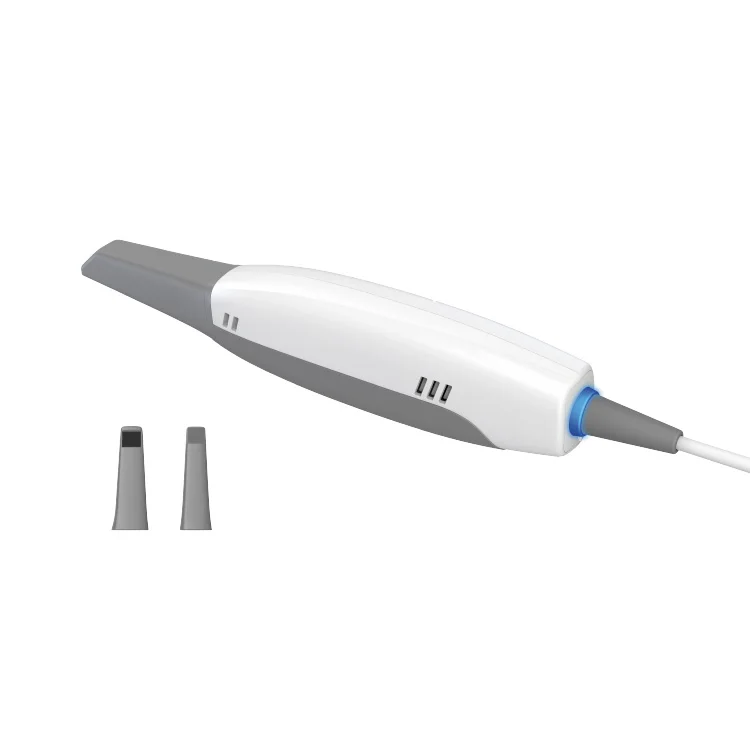 During the extraction of the silicone impression, the patient also experiences discomfort.
During the extraction of the silicone impression, the patient also experiences discomfort.
Our clients deserve better, they no longer have to endure discomfort during impression taking. The intraoral scanner allows you to quickly (scan the entire arch takes up to 2 minutes) and comfortably (no discomfort) to take a digital impression.
2. High precision
Quite often voids and bubbles appear in the most important places on impressions. As a result, the impression model is inaccurate and the dental technician returns it for re-shooting. This delays the healing process. The patient is wasting time as he has to come back to the clinic.
Intraoral 3D scanning allows you to get a digital impression without errors. If the doctor sees digital pores, glare or areas with incomplete scanning in the image, then he additionally performs a local rescan.
3. Fast
In the past, patients had to wait up to 2 weeks for a dental technician to fabricate a prosthesis. Thanks to intraoral 3D scanning, the whole process will take several days.
Thanks to intraoral 3D scanning, the whole process will take several days.
STL file is immediately sent to the dental laboratory without the involvement of a courier service. The risks of damage or loss of the impression during transportation are leveled.
If the technician is not satisfied with the quality of the received digital impression, the doctor can scan the "problem" areas in a matter of minutes and send a new file. With a traditional cast, this would take several days.
Conclusion: Our patients no longer need to take diagnostic impressions. No more discomfort, no more problems due to an inaccurate impression and tedious waiting for a plaster model to be made in the dental laboratory!11 Mar 2021
2170
Dental scanners - overview, prices
Dental scanners are devices for creating 3D computer models (digital impressions) of the dentoalveolar system in order to create accurate prosthetic teeth and soft tissues using a CAD / CAM system. Scanners are intraoral (intraoral) and laboratory.
Scanners are intraoral (intraoral) and laboratory.
Typically, scanners are manufactured and supplied as part of dental CAD/CAM systems.
Intraoral scanners
Intraoral scanners provide digital 3D impressions of teeth and surrounding soft tissues directly in the patient's mouth. Thus, there is no need for a morally obsolete and inconvenient procedure for creating plaster models and casts.
The system is very easy to use and does not require much training: the dentist simply places the scanner in the patient's mouth, presses the "Scan" button and begins to freely move it along the surfaces of the teeth. Simultaneously with the movements of the operator's hand, an image of the 3D model being built appears on the computer screen.
Thanks to a special optical system, the entire dentition can be scanned, allowing the dentist to obtain digital impressions of the full arch.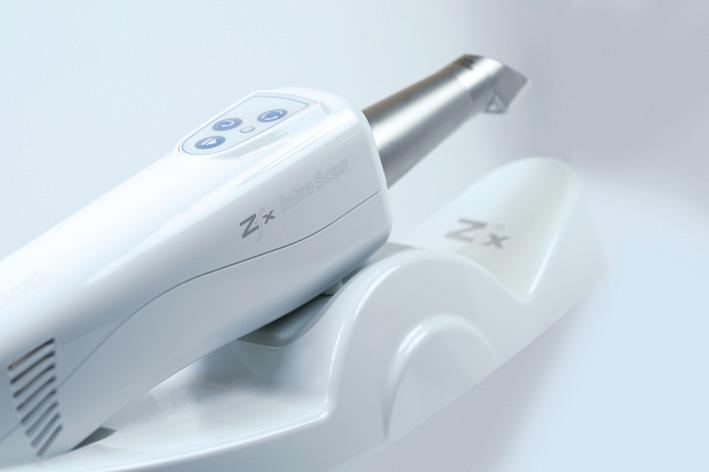 Scanning the entire dental arch takes no more than 2 minutes. The device does not require powdering the teeth prior to scanning, thus avoiding all associated side effects.
Scanning the entire dental arch takes no more than 2 minutes. The device does not require powdering the teeth prior to scanning, thus avoiding all associated side effects.
The scanner control system allows you to fully control the device with the movement of your hand and the dentist does not need to constantly move between the scanner and the computer to enter commands. In addition to the scanning program, the package for the end user also includes a patient database and a program for post-processing the received scan. After the scanning process is completed, the image is converted into an STL file, which is subsequently processed by a dental laboratory equipped with CAD/CAM equipment.
Advantages of using a digital intraoral scanner in dentistry:
- a modeling process that used to take several hours (dental technicians had to make plaster models and impressions) now takes only a few minutes
- no consumables are needed
- non-invasive examination, the patient does not feel any discomfort, can even be used when the patient has an increased gag reflex
- exceptionally high model accuracy and, as a result, the best result of orthodontic treatment
- the ability to assess the clinical situation and the quality of the impression immediately after receiving it; in case of detection of a defect in a three-dimensional virtual model in the vast majority of devices, it is enough to rescan only this area, and not the entire jaw
- the minimum number of consultations and visits to the dentist.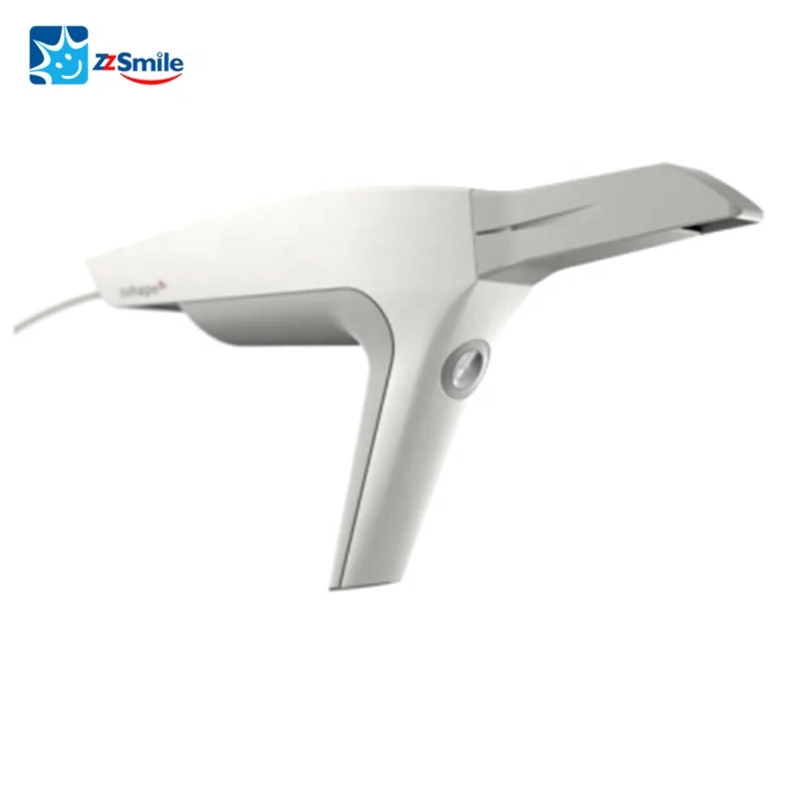
Most popular scanner models: A-tron3d (Austria), Sirona APOLLO and CEREC (Germany), 3D Progress (Italy), 3Shape TRIOS (Denmark)
The price of an intraoral scanner including software is about $20,000.
3D Lab Scanners
3D Lab Scanners are stationary devices that are placed in the dental laboratory and allow you to create a digital impression from a traditional plaster cast.
The device projects structured light onto the impression and, by refraction of this light, restores the location of surface points in space. The scanner rotates the impression and takes pictures automatically. The computer program analyzes the input data and displays the final model.
Popular models: Sirona (Germany), Dental Wings (Canada), Smart Optics Activity (Germany) models on dental forums.
See also: Top 10: Dental software
2019.